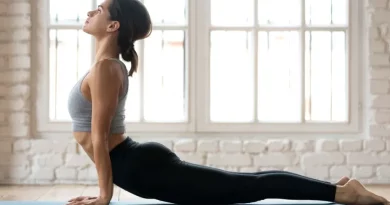Here’s Why You Should Still Wear SPF in the Winter

Just hearing the word sunscreen might conjure up images of beach days, sunny hikes, and outdoor sporting events. When there isn’t a cloud in the sky, and the sun is shining brightly, we lather up that trusty SPF, conscious that it’s keeping our skin safe.
But SPF never goes out of season. From summer days to bundled-up winters, we should be using sunscreen.
Why SPF?
According to the Skin Cancer Foundation, the daily application of sunscreen with SPF 15 or higher reduces our risk of developing squamous cell carcinoma and melanoma. It also decreases the sun’s effect on aging.
Rachel Roff, Founder and CEO of Urban Skin Rx, explains, “Whether or not we burn, the sun emits UVA and UVB light that damages our skin over time. UVA light, which has longer wavelengths, ages our skin while UVB light burns it. Both are harmful in large amounts as they harm our cell DNA. Unprotected exposure to the sun’s light greatly increases our risk of developing various skin cancers and will lead to premature aging. Additionally, without the correct protective eyewear, sunlight can contribute to the development of cataracts.”
Sunscreen contains SPF, or sun protection factor, in varying levels. SPF protects us against UVB light. Sunblocks with low SPF, 15 or below, offer less protection than sunblocks with high SPF, 50 or above. When choosing sunscreen, you should determine what kind of UVB protection you’re looking for; the higher the SPF, the lower the risk of skin damage. You should also determine if the product is broad-spectrum and gauge the difference between mineral and chemical sunscreens.
Lillie Sun, Growth Manager at Three Ships Beauty, claims, “While SPF protects us against UVB light, broad or full-spectrum sunscreens protect us from UVA light. When products adhere to the standards set by the FDA, the protection against UVA should increase proportionally with the SPF. When purchasing sunscreen, be sure to check the labels to see if the product has passed a broad-spectrum test. Additionally, you might consider either physical (also known as mineral) sunscreen or chemical sunscreen. Mineral sunscreen blocks UV rays at the skin’s surface, and chemical sunscreen absorbs this light before it causes skin damage. Some products might take a hybrid approach, containing ingredients from mineral and chemical sunscreens.”
When it comes to picking the right daily sunscreen, you might have to try a few products. Chemical sunscreens absorb into the skin more easily than mineral sunscreens that leave a white paste. If you choose a chemical sunscreen, check the label to determine if it’s reef-safe.
At this point, you might be on board with finding the sunscreen that works for you, but you still have some questions about why it’s necessary even on cloudy, winter days. Don’t worry. We’ve got the answers.
Cloud Coverage Isn’t Enough:
Allen Foster, a reporter for the Chicago Tribune, claims clouds only block about 20 percent of the sun’s UV rays. On the most overcast days, when you can’t get a peek from the sun, your skin is still absorbing most of its light. Foster also reminds us that snow’s reflective nature can increase the UV radiation impacting your skin.
“Cold weather gives us the illusion that we can do without sunscreen,” says Ashwin Sokke, Co-Founder of WOW Skin Science. “We think that if we can’t feel or see the sun, we’re protected from the damaging nature of its light. This perception is a misunderstanding of ultraviolet, infrared, and visible light. These types of light have varying wavelengths and impacts. Cloud coverage might block the sun’s visible and infrared light, but it doesn’t block the shorter wavelengths of ultraviolet light. On cloudy, cold days, we still need to be doing our utmost to protect our skin.”
Cold weather offers a different form of protection, extra clothing. However, even with winter layers, we should be keeping up with our daily sunscreen routine.
Your Clothes are Porous:
Winter’s wardrobe indeed covers more skin than summer’s. Long sleeves, pants, jackets, and hats all form a barrier between our skin and the sun’s radiation, but they’re not foolproof.
“Our clothing is full of pores and gaps that allow sunlight to find our skin,” says Ubaldo Perez, CEO of Hush. “Our clothes are not designed to block UV radiation. In our most covered-up state, it still seeps through, which is why sunscreen is always necessary. Parts of our bodies, especially the face, are almost always exposed. Cold weather is deceiving. It makes you believe the parts of your body covered by clothes are automatically protected and that somehow the exposed parts need less sunscreen than on sunny, warm days. In the winter months, before you put on all your layers of clothing, apply sunscreen.”
Unfortunately, applying sunscreen once is insufficient. As the UV filters block radiation, they become more and more ineffective. Both mineral and chemical sunscreens react this way. To keep your skin protected all day, you should reapply.
Oliver Zak, Co-Founder and CEO of Mad Rabbit, states, “There are many factors that affect how quickly sunscreen breaks down, and there’s no perfect formula for when we should reapply. Some sunscreens will give you estimates on the optimal times for reapplication based on the SPF content. However, UV concentration changes throughout the day. For example, UV rays at midday will likely eat away your sunscreen more quickly than the early morning rays.”
So how do we know when to reapply? Amanda E. Johnson, Chief Marketing Officer at TatBrow, offers some advice.
Johnson states, “If you’re being physically active, you should reapply sunscreen as soon as possible. Sweat and water can slough off sunblock, especially if you haven’t given your skin time to absorb it. Some sunblocks might be water-resistant, but none of them are waterproof. If you’re spending significant time outdoors during the day, you should be reapplying sunscreen every couple of hours. Many skin care experts and doctors recommend sunscreen reapplication every two hours as a general rule, especially if your exposure to UV light is high. If you’re spending most of the day indoors, you will be able to spread out the reapplication process but not nix it entirely.
Even Indoors?
The short answer is yes. We need sunscreen both indoors and outdoors. We frequent very few places in the daytime hours where light is completely blocked out. Through windows, we are experiencing sun exposure.
Ann McFerran, CEO of Glamnetic, claims, “Even indoors, we expose our bodies to UVA and UVB light. Whether we’re in an office, at home, or in a shopping center, the buildings we’re in have windows designed to allow natural light to fill the space. While glass blocks UVB radiation, it does not fully block UVA radiation. We won’t get a sunburn sitting at our desks near a grand, floor-to-ceiling window, but UVA’s impact on premature aging and skin cancer can still reach us. We should be maintaining a skincare routine that protects us from the sun even if we spend most of our days indoors.”
Apply Multiple Times:

Once you’ve found the sunscreen that works for you, incorporate its application into your morning routine.
Lauren Kleinman, Co-Founder of The Quality Edit, explains how we can make sunscreen application a daily habit.
“Consistency is key,” Kleinman states. “Before it becomes part of our routine, wearing and reapplying sunscreen can seem like a hassle. If you’re used to only wearing sunscreen at the beach or on long, outdoor excursions, it’s easy to think it’s only useful in those moments. To make sunscreen part of your daily ritual, start by placing it near other items you use every morning. Each of us has a morning routine, some more complex than others. Take note of what products you use most frequently, and place the sunscreen next to them. Soon, sunscreen application will be just one more step in starting your day. When going out during the day, have another, maybe smaller bottle on hand to reapply.”
Skin experts and dermatologists agree that applying sunscreen is not an occasional activity. Though it may seem like a hassle at first, daily sunscreen application is necessary, and it will soon become a healthy habit.



